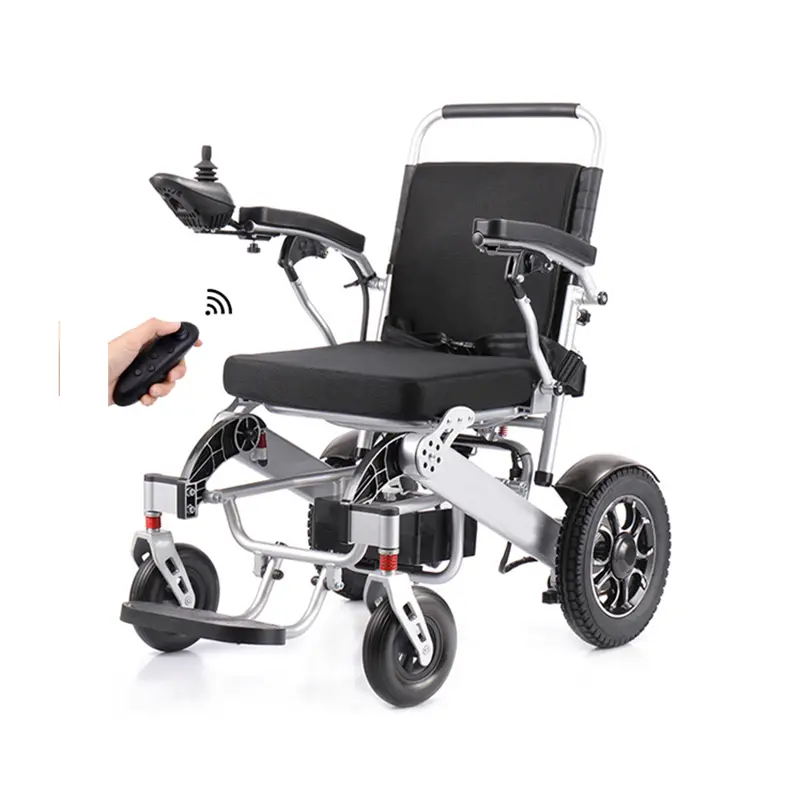Analysis of the upstream and downstream industry chain of electric wheelchairs: opportunities and challenges coexist
Against the backdrop of the aging of the global population and the increasing number of disabled people, the demand for the electric wheelchair market continues to rise. As an important rehabilitation aid, electric wheelchairs not only improve the quality of life of people with limited mobility, but also bring new development opportunities to the healthcare industry.
1. Overview of the electric wheelchair industry chain
The electric wheelchair industry chain covers all links from raw material supply, parts manufacturing, vehicle assembly to sales and after-sales service. The upstream mainly includes raw material suppliers and parts manufacturers, the midstream is the production and manufacturing enterprises of electric wheelchairs, and the downstream is the sale of products to end users through various channels.
2. Analysis of upstream industries
(I) Raw material supply
The production of electric wheelchairs requires a variety of raw materials, mainly including aluminum alloys, synthetic resin materials, rubber materials, etc. The supply of these raw materials directly affects the production cost and quality of electric wheelchairs. For example, aluminum alloys are widely used in the frame manufacturing of electric wheelchairs due to their light weight and high strength, which can effectively reduce the weight of wheelchairs and improve their portability. With the continuous development of global industry, the supply of these raw materials is relatively stable, but price fluctuations still need to be paid attention to.
(II) Parts Manufacturing
Parts are the core components of electric wheelchairs, including motors, batteries, integrated circuits, sensors, etc. The performance of motors and batteries determines the power and endurance of electric wheelchairs, while integrated circuits and sensors provide support for intelligent functions. In recent years, with the advancement of technology, the parts of electric wheelchairs have been continuously upgraded. For example, high-performance lithium batteries have gradually replaced traditional lead-acid batteries, significantly improving the range of wheelchairs.
3. Analysis of Midstream Industries
(I) Manufacturing
Electric wheelchair manufacturers in the midstream are the core link of the industrial chain. These companies assemble and inspect the whole vehicle by purchasing raw materials and parts from upstream. At present, there are many electric wheelchair manufacturers in the world, mainly concentrated in Europe, America and Asia. China’s electric wheelchair manufacturers have also achieved remarkable development in recent years and have become an important global production and export base. For example, companies such as Jiangsu Yuyue Medical Equipment Co., Ltd. and Guangdong Kaiyang Medical Technology Group Co., Ltd. are in the leading position in the industry in terms of technology research and development and production scale.
(II) Technology Development Trends
The technology development trends of electric wheelchairs are mainly reflected in two aspects: intelligence and lightweight. Intelligent functions include automatic navigation, remote control, intelligent obstacle avoidance, etc., which can provide users with a more convenient user experience. Lightweighting reduces the weight of wheelchairs and improves their portability by using materials such as high-strength aluminum alloy. The development of these technologies not only increases the added value of products, but also promotes the upgrading of the entire industry.
4. Downstream Industry Analysis
(I) Sales Channels
Downstream sales channels mainly include specialty stores, pharmacies, e-commerce platforms, etc. With the popularization of the Internet, e-commerce platforms have gradually become an important channel for the sales of electric wheelchairs. For example, the number of electric wheelchair orders on e-commerce platforms such as JD Health has shown a rapid growth trend in recent years. In addition, some companies have also expanded sales channels by cooperating with rehabilitation medical institutions.
(II) End-user demand
The end users of electric wheelchairs mainly include the disabled, the elderly, and patients in rehabilitation. With the intensification of the global aging population, the demand for electric wheelchairs by the elderly is increasing. At the same time, the disabled are also highly dependent on electric wheelchairs, and their demand is mainly concentrated on the comfort, stability and intelligent functions of the product. Therefore, companies need to develop diversified products according to different user needs.
5. Challenges and opportunities faced by the industry chain
(I) Challenges
Raw material price fluctuations: The prices of the main raw materials of electric wheelchairs, such as aluminum alloy and rubber, are greatly affected by the supply and demand relationship in the international market and the fluctuations in commodity prices. The rise in raw material prices will increase production costs and compress the profit margins of enterprises.
Intense technological competition: With the rapid development of the electric wheelchair industry, technological competition is becoming increasingly fierce. Enterprises need to continuously invest in research and development funds to maintain their technological leadership, otherwise they may face the risk of being eliminated by the market.
Strict quality standards: As a medical device, the quality of electric wheelchairs is directly related to the safety and health of users. Therefore, countries have strict quality standards for electric wheelchairs, and enterprises need to meet relevant certifications and standards before they can enter the international market.
(II) Opportunities
Market demand growth: The increasing global aging of the population and the increase in the number of disabled people have brought broad development space to the electric wheelchair market. In particular, in some developed countries and regions, the demand for electric wheelchairs continues to rise.
Promoted by technological innovation: With the continuous advancement of science and technology, the intelligent and lightweight development trend of electric wheelchairs is obvious. Enterprises can develop more competitive products through technological innovation to meet the market demand for high-end electric wheelchairs.
Rise of emerging markets: The economies of some emerging market countries are developing rapidly, the income level of residents is rising, and the demand for electric wheelchairs is gradually increasing. These emerging markets provide new growth opportunities for enterprises.
Post time: Jul-11-2025


